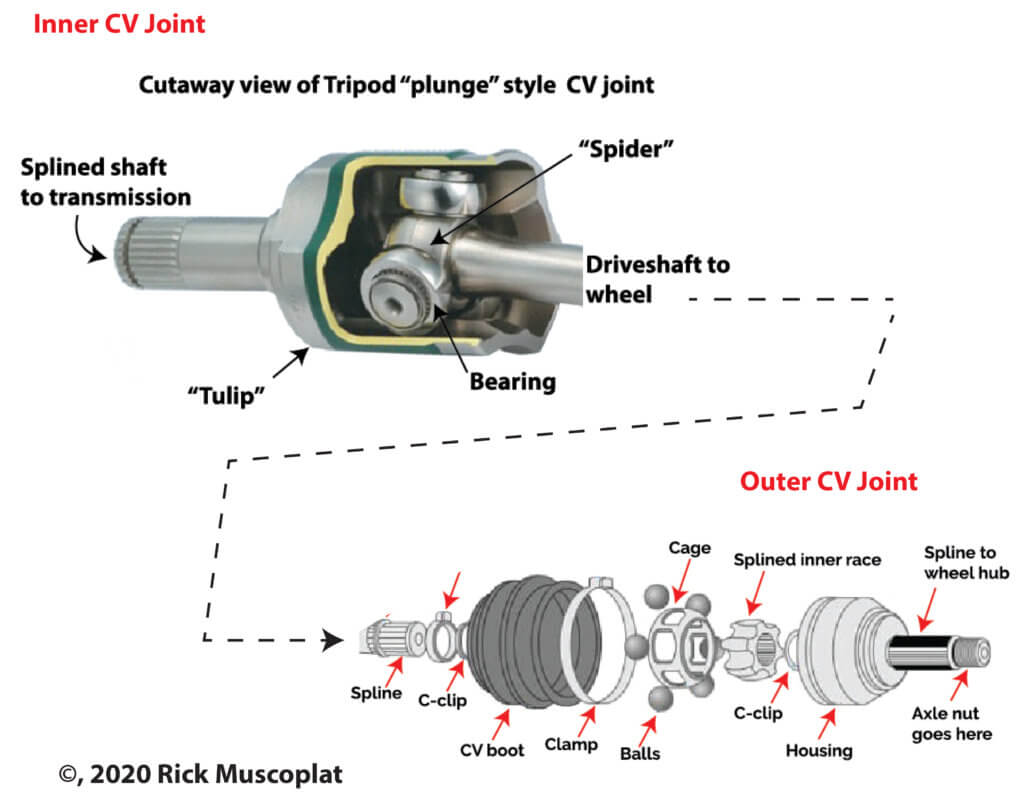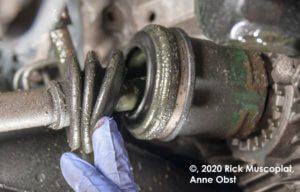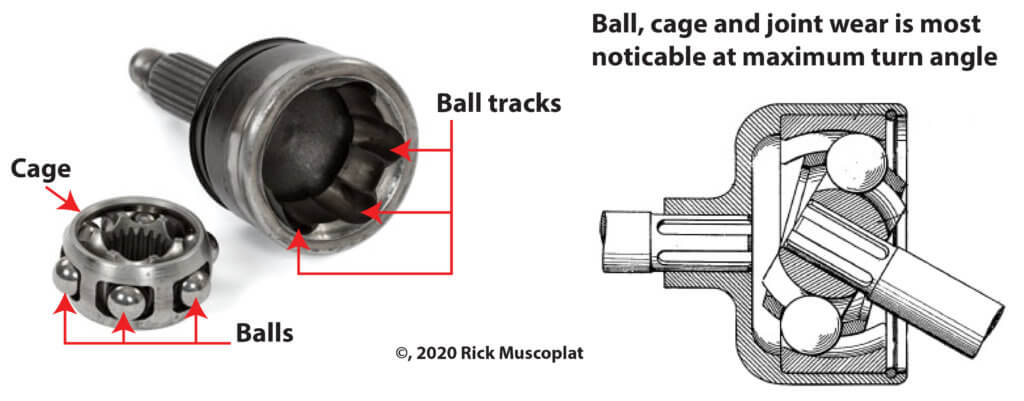Do you have CV joint vibration or noise? — How to check
How to diagnose CV joint vibration or noise
Diagnosing a CV joint noise or vibration is fairly easy if the joint is severely worn, but the diagnosis can be frustrating if it has just started to wear. In the early stages of CV joint wear, the symptoms can be a low humming noise, a vibration during acceleration or coasting, or a clicking noise during tight turn maneuvers at low speed. Plus, the noise/vibration symptoms differ between the inner and outer CV joints. I’ll walk you through the diagnostic process.

CV joint vibration diagnostic tips
A cracked or torn CV boot and evidence of grease leakage almost always require an axle shaft replacement.
However, CV joints can make noise or vibrate even if the boot is intact
An outer CV joint is more likely to make a clicking noise than an inner CV joint
An inner CV joint is more likely to produce vibration than an outer CV joint
Step 1: Check CV joint boot condition
A cracked or torn CV boot will leak grease, causing the CV joint to run low on lubrication and allow road grit to enter the joint. Road grit will cause rapid wear. Since the axle and CV joint spin at high rates, a torn CV boot will cause the grease to fling in a circular pattern,

Torn CV boot and leaking grease
depositing a layer of grease on surrounding components. In some cases, if you catch the leak early and confirm there’s no road grit in the remaining grease, you can clean the joint and install a new CV boot kit. However, in most cases, it’s too late, and you must replace the axle shaft with a new or rebuilt unit.
Step 2: Check for outer CV joint noise on tight turns
Drive the vehicle in an empty parking lot. Roll down your windows. Turn the steering wheel to full left or full right to put the joint in its most extreme position. The drive the vehicle backward at 2-MPH. Listen for clicking noise. Turn the wheel in the opposite direction, drive backward at 2-MPH, and listen for popping or clicking noise. Notice which side the noise is coming from and replace that axle shaft.

Step 3: Check for inner CV joint vibration during acceleration and coasting
A worn inner CV joint can cause vibration during acceleration. An inner CV joint is more prone to a shudder or vibration during acceleration as the roller bearings travel along the worn tracks in the “tulip” portion of the joint. The inner joint moves in and out of the “tulip” when going over bumps and dips, so you may also notice a change in the vibration patterns on rough roads. Vibration tends to dampen during coasting operations.
A worn inner CV joint can change vibration patterns during lane-change maneuvers, but keep in mind that worn wheel bearings can change pitch when alternating between acceleration and coasting and lane-change maneuvers.
If the vibration continues at constant speeds or during coasting, the cause is usually NOT a worn CV joint. Check for wheel balance, a bent wheel, or tire runout.
Step 4: Check for clunking noise when shifting into Drive
If you hear/feel a clunking noise when shifting into drive, that can be a sign of a worn CV joint, just the same as a worn U-joint
©, 2020 Rick Muscoplat
Posted on by Rick Muscoplat